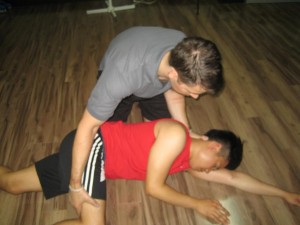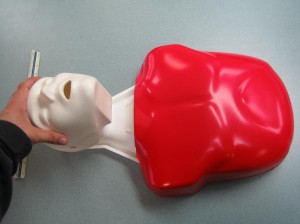While the healthcare system of America has been on a steady rise of improvement over the past several years, cardiopulmonary resuscitation training still remains as the most popular healthcare training program in the country. While healthcare providers – HCPs- or students studying to become HCPs make up the bulk of the trainees in these programs, quite a number of trainees enrol in the program because of a sense of responsibility to themselves and society.
Why study CPR?
CPR is a basic skill that can help save someone’s life in an emergency. While other people want to take CPR training for no special reason, people who work in high risk situations – not necessarily healthcare – have a responsbility to themselves and their co-workers. To be trained as a rescuer means that a person can provide immediate care and management to person experiencing a cardiovascular and/or respiratory problem. This saves lives as well as potential lawsuits.
What are the best CPR programs?
There are two kinds of American CPR courses: Basic Life Support or BLS and Advanced Life Support or ALS. These two programs vastly differ in course content, which is reflected in the length of the programs. Basic Life Support is basically the backbone of all CPR programs, ALS included. Students are taught the proper steps in the chain-of-survival, focusing on skill and knowledge building.
Basic Life Support Programs

Basic Life Support is made up of technique updates and standardized guidelines used when performing CPR. There are four BLS programs using the concept of BLS from the American Heart Association.
- Basic CPR and AED – 4 hours, general public program
- Basic CPR and AED (C) – 4 hours, HCP program
- CPR and first aid – 4 hours, general public program
- BLS for healthcare providers, 4 and a half hours
There is only one of these programs that has a renewal program – BLS for healthcare providers. Certification for the first basic CPR and AED program is optional; trainees can choose not to get certified by not taking the skills exam. The rest of the programs have a mandatory examination (skill and written) that students need to pass in order to receive their credentials.
Basic CPR and AED

Basic CPR teaches students the very basic BLS guidelines, focusing on the following steps from the AHA chain of survival:
- Recognizing cardiac arrest
- Starting chest compressions immediately
- Defibrillation with anAED
- Advanced life support
- Post-cardiac arrest care
For basic CPR and AED programs, the focus is on the first two to three links of the chain. The full chain is covered better in the BLS for healthcare provider program. The biggest part of CPR training is skill development, which accounts for the large number of hours spent practicing skills such as chest compressions, defibrillation using an AED trainer, and providing rescue breaths with a barrier.
With all these programs available, our providers are hands-down the best in the country. You won’t find better rates and curricula than with us. Because of the wide range of programs that include BLS and ALS (Advanced Life Support), trainees with us never have any problems with their certification.